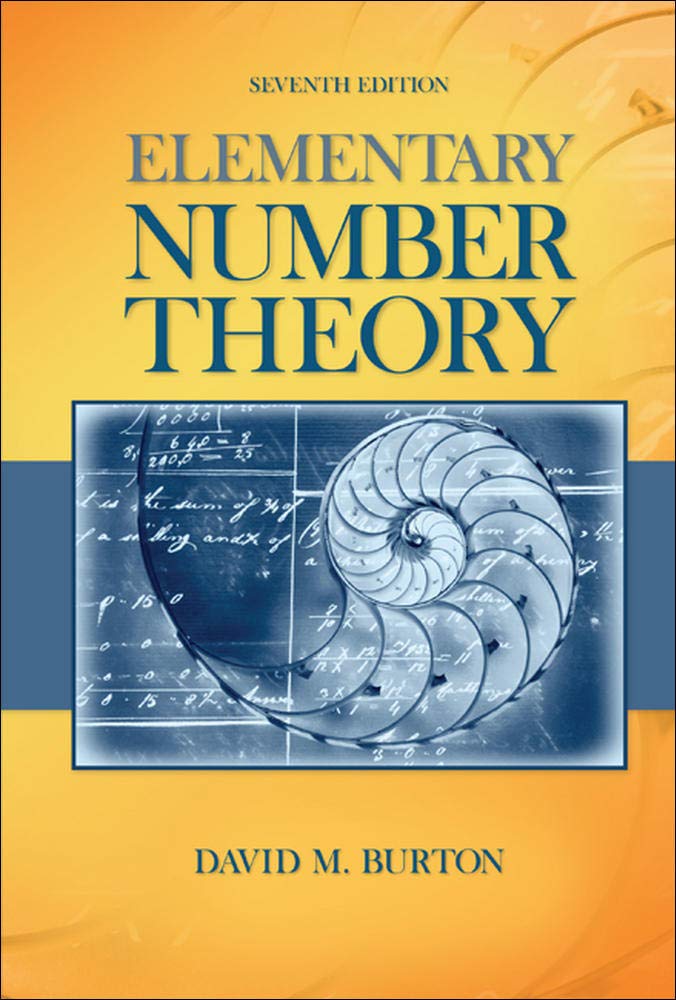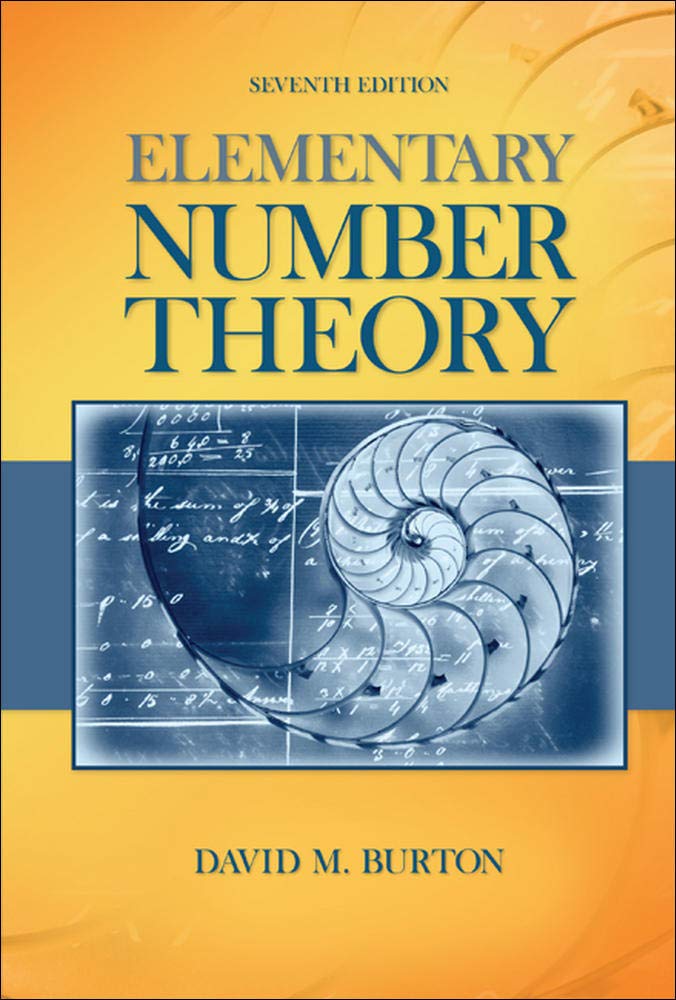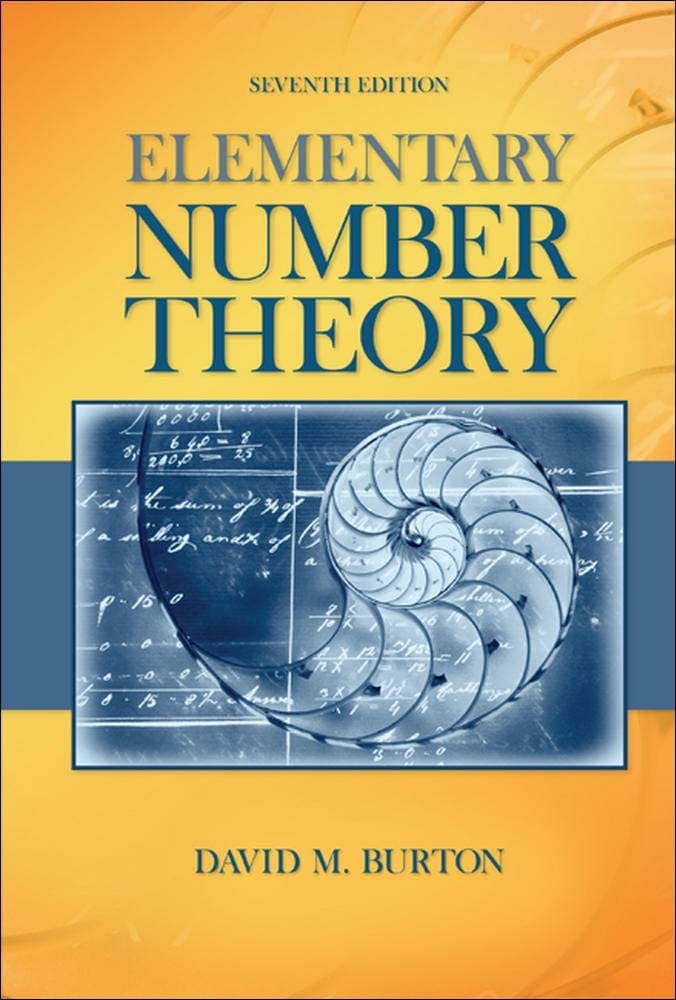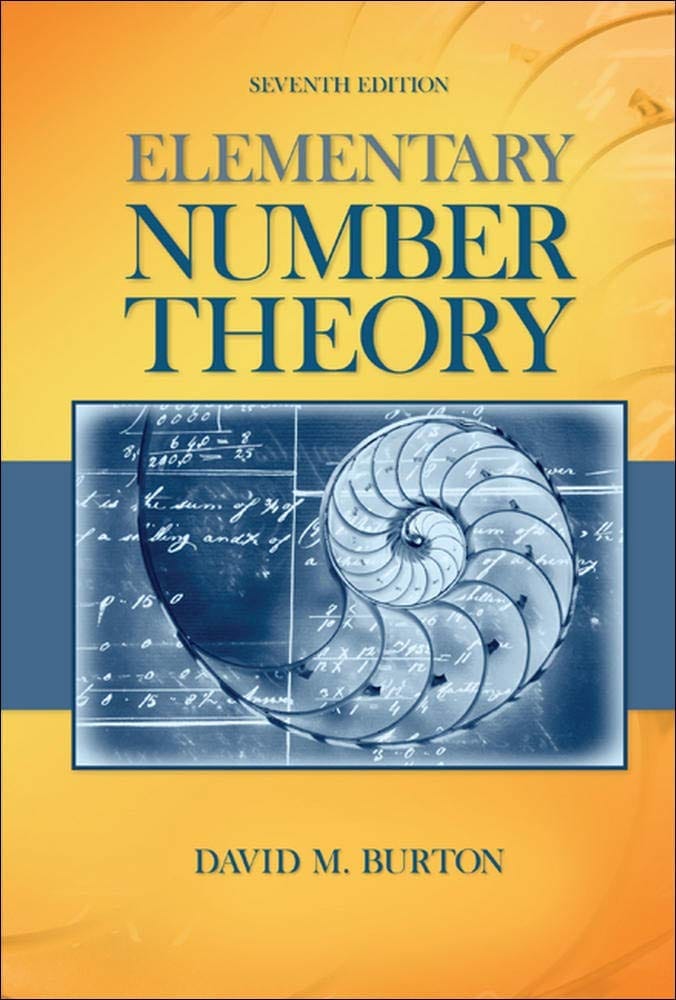
Elementary Number Theory Problems 3.2 Solution (David M. Burton's 7th Edition)
My solutions for Burton's Elementary Number Theory Problems 3.2 (7th Edition)
Table of Contents
Background
These are my solutions while I was studying number theory using this book. I will use the theorems and definitions mentioned in the book.
If you don't have the book or are unsure which theorem or definition I am using here, you can check out this article, where I listed all theorems, corollaries, and definitions by following the book's order.

If you haven't heard of this book and are interested in learning number theory, I strongly recommend it since it is quite friendly for beginners. You can check out the book by this link:

I will only use theorems or facts that are proved before this chapter. So you will not see that I quote theorems or facts from the later chapters.
All Problems in 3.2 (p. 49 - p. 50)
Q1
Determine whether the integer $701$ is prime by testing all primes $p \leq \sqrt{701}$ as possible divisors. Do the same for the integer $1009$.
Q2
Employing the Sieve of Eratosthenes, obtain all the primes between 100 and 200.
Q3
Given that $p \not \mid n$ for all primes $p \leq \sqrt[3]{n}$, show that $n \gt 1$ is either a prime or the product of two primes.
[Hint: Assume to the contrary that $n$ contains at least three prime factors.]
Q4
Establish the following facts:
(a) $\sqrt{p}$ is irrational for any prime $p$.
(b) If $a$ is a positive integer and $\sqrt[n]{a}$ is rational, then $\sqrt[n]{a}$ must be an integer.
(c) For $n \geq 2$, $\sqrt[n]{n}$ is irrational.
[Hint: Use the fact that $2^n > n$.]
Q5
Show that any composite three-digit number must have a prime factor less than or equal to $31$.
Q6
Fill in any missing details in this sketch of a proof of the infinitude of primes: Assume that there are only finitely many primes, say $p_{1}, p_{2}, ..., p_{n}$. Let $A$ be the product of any $r$ of these primes and put $B = \frac{p_{1}p_{2}...p_{n}}{A}$. Then each $p_{k}$ divides either $A$ or $B$, but not both. Because $A + B \gt 1$, $A + B$ has a prime divisor different from any of the $p_{k}$, which is a contradiction.
Q7
Modify Euclid's proof that there are infinitely many primes by assuming the existence of a largest prime $p$ and using the integer $N = p! + 1$ to arrive at a contradiction.
Q8
Give another proof of the infinitude of primes by assuming that there are only finitely many primes, say $p_{1}, p_{2}, ..., p_{n}$, and using the following integer to arrive at a contradiction:
$$ N = p_{2}p_{3} \cdots p_{n} + p_{1}p_{3} \cdots p_{n} + \cdots + p_{1}p_{2} \cdots p_{n-1} $$Q9
(a) Prove that if $n \gt 2$, then there exists a prime $p$ satisfying $n \lt p \lt n!$.
[Hint: If $n! - 1$ is not prime, then it has a prime divisor $p$; and $p \leq n$ implies $p \mid n!$, leading to a contradiction.]
(b) For $n \gt 1$, show that every prime divisor of $n! + 1$ is an odd integer that is greater than $n$.
Q10
Let $q_{n}$ be the smallest prime that is strictly greater than $P_{n} = p_{1}p_{2} \cdots p_{n} + 1$. It has been conjectured that the difference $q_{n} - (p_{1}p_{2} \cdots p_{n})$ is always a prime. Confirm this for the first five values of $n$.
Q11
If $p_{n}$ denotes the $n$th prime number, put $d_{n} = p_{n+1} - p_{n}$. An open question is whether the equation $d_{n} = d_{n + 1}$ has infinitely many solutions. Give five solutions.
Q12
Assuming that $p_{n}$ is the $n$th prime number, establish each of the following statements:
(a) $p_{n} > 2n - 1$ for $n \geq 5$.
(b) None of the integers $P_{n} = p_{1}p_{2} \cdots p_{n} + 1$ is a perfect square.
[Hint: Each $P_{n}$ is of the form $4k + 3$ for $n \gt 1$.]
(c) The sum
is never an integer.
Q13
For the repunits $R_{n}$, verify the assertions below:
(a) If $n \mid m$, then $R_{n} \mid R_{m}$.
[Hint: If $m = kn$, consider the identity $$x^{m} - 1 = (x^{n} - 1)(x^{(k - 1)n} + x^{(k - 2)n} + ... + x^{n}+ 1).]$$
(b) If $d \mid R_{n}$ and $d \mid R_{m}$, then $d \mid R_{n+m}$.
[Hint: Show that $R_{m+n} = R_{n}10^{m} + R_{m}$.]
(c) If $gcd(n, m) = 1$, then $gcd(R_{n}, R_{m})= 1$.
Q14
Use the previous problem to obtain the prime factors of the repunit $R_{10}$.
Ranblog Newsletter
Join the newsletter to receive the latest updates in your inbox.


